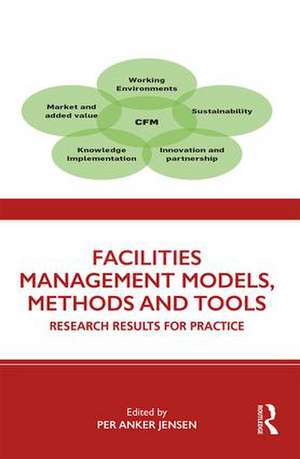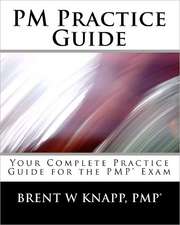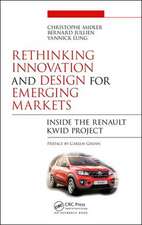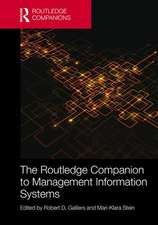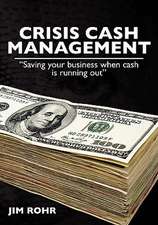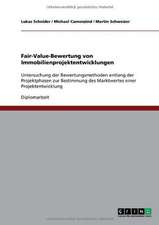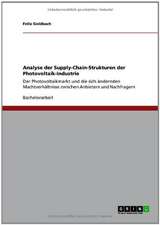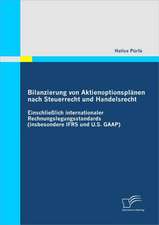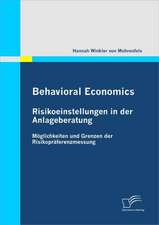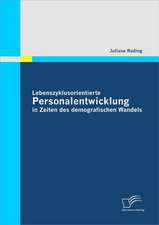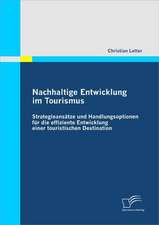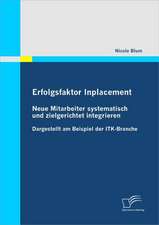Facilities Management Models, Methods and Tools: Research Results for Practice
Editat de Per Anker Jensenen Limba Engleză Hardback – 7 iun 2019
The 34 models, methods and tools are presented in relation to five typical challenges for facilities managers:
- Strategy development
- Organisational design
- Space planning
- Building projects
- Optimisation
| Toate formatele și edițiile | Preț | Express |
|---|---|---|
| Paperback (1) | 449.41 lei 43-57 zile | |
| CRC Press – 30 iun 2021 | 449.41 lei 43-57 zile | |
| Hardback (1) | 680.73 lei 43-57 zile | |
| CRC Press – 7 iun 2019 | 680.73 lei 43-57 zile |
Preț: 680.73 lei
Preț vechi: 914.36 lei
-26% Nou
Puncte Express: 1021
Preț estimativ în valută:
130.25€ • 136.36$ • 107.78£
130.25€ • 136.36$ • 107.78£
Carte tipărită la comandă
Livrare economică 07-21 aprilie
Preluare comenzi: 021 569.72.76
Specificații
ISBN-13: 9780367028725
ISBN-10: 0367028727
Pagini: 356
Ilustrații: 78 Line drawings, black and white; 8 Halftones, black and white; 69 Tables, black and white
Dimensiuni: 156 x 234 x 20 mm
Greutate: 0.45 kg
Ediția:1
Editura: CRC Press
Colecția Routledge
ISBN-10: 0367028727
Pagini: 356
Ilustrații: 78 Line drawings, black and white; 8 Halftones, black and white; 69 Tables, black and white
Dimensiuni: 156 x 234 x 20 mm
Greutate: 0.45 kg
Ediția:1
Editura: CRC Press
Colecția Routledge
Public țintă
Academic and Professional Practice & DevelopmentCuprins
CONTENTS
Preface
Forewords
Abbreviations
Contributors
Acknowledgements
INTRODUCTION
PART A: GUIDE TO FM TOOLS
Introduction to part A
A.I Strategy Development
1. Scenarios for FM in the future (B.34)
2. Adaptation between FM product and process (B.26)
3. Strategies for sustainable FM (B.6)
4. Drivers for innovation in services (B.14)
A.II Organisational Design
5. Organisation of FM in relation to core business (B.31)
6. Collaboration with external providers (B.19)
7. Capacity building in FM organisations (B.7)
8. Establishing property centres (B.33)
A.III Space Planning
9. Typology of office workplaces (B.1)
10. Value based space optimisation (B.4)
11. How to share space (B.5)
12. Creativity and facilities (B.2)
A.IV Building Project
13. Usability briefing (B.3)
14. Climate change and buildings (B.8)
15. Sustainability building renovation (B.10)
16. Maturity model for strategic partnerships (B.20)
17. From FM to building (B.21)
A.V Optimisation
18. FM as creator of added value (B.29)
19. Collaboration on value creation in FM innovation (B.16)
20. Personas as basis for service innovation (B.17)
21. Energy efficient FM (B.11)
22. How IT provides added value for FM (B.28)
PART B: MODELS, METHODS AND TOOL
Introduction to part B
B.I Facilities that support users and activities
1. Typology of office workplaces – Juriaan van Meel
INDEX
Preface
Forewords
Abbreviations
Contributors
Acknowledgements
INTRODUCTION
PART A: GUIDE TO FM TOOLS
Introduction to part A
A.I Strategy Development
1. Scenarios for FM in the future (B.34)
2. Adaptation between FM product and process (B.26)
3. Strategies for sustainable FM (B.6)
4. Drivers for innovation in services (B.14)
A.II Organisational Design
5. Organisation of FM in relation to core business (B.31)
6. Collaboration with external providers (B.19)
7. Capacity building in FM organisations (B.7)
8. Establishing property centres (B.33)
A.III Space Planning
9. Typology of office workplaces (B.1)
10. Value based space optimisation (B.4)
11. How to share space (B.5)
12. Creativity and facilities (B.2)
A.IV Building Project
13. Usability briefing (B.3)
14. Climate change and buildings (B.8)
15. Sustainability building renovation (B.10)
16. Maturity model for strategic partnerships (B.20)
17. From FM to building (B.21)
A.V Optimisation
18. FM as creator of added value (B.29)
19. Collaboration on value creation in FM innovation (B.16)
20. Personas as basis for service innovation (B.17)
21. Energy efficient FM (B.11)
22. How IT provides added value for FM (B.28)
PART B: MODELS, METHODS AND TOOL
Introduction to part B
B.I Facilities that support users and activities
1. Typology of office workplaces – Juriaan van Meel
- Creativity and facilities - Birgitte Hoffmann
- Usability briefing – Aneta Fronczek-Munter
- Value based space optimisation – Mette Tinsfeldt
- How to share space – Rikke Brinkø Berg
B.II Sustainability from goal to action
- Strategies for sustainable FM – Susanne Balslev Nielsen
- Capacity building in FM organisations – Kirsten Ramskov Galamba and
Susanne Balslev Nielsen
- Climate change and buildings – Rimante A. Cox
- ESCO as method for learning in FM organisations – Jesper Ole Jensen
- Sustainable building renovation - Per Anker Jensen
- Energy efficient FM – Christian Stenqvist
- Improving the environmental performance of buildings – Esmir Maslesa
B.III Innovation and partnerships
- ICT in the FM supply chain – Ada Scupola
- Drivers for innovation in services – Per Anker Jensen (based on work by
Giulia Nardelli)
- Management of innovation in FM – Per Anker Jensen (based on work by
Giulia Nardelli)
- Collaboration on value-creation in FM innovation – Per Anker Jensen
(based on work by Giulia Nardelli)
- Personas as basis for service innovation – Anne Vorre Hansen
- Public-Private Partnerships and FM – Kristian Kristiansen
- Collaboration with external providers – Kresten Storgaard
- Maturity model for strategic partnerships – Jakob Brinkø Berg
B.IV Transfer of knowledge from FM to building projects
- From FM to building – Per Anker Jensen
- Operational oriented building process – Poul Henrik Due
- Communities of practice as learning tool - Torben Damgaard
- Integrating operational knowledge in design - Helle Lohmann Rasmussen
B.V FM and added value
- FM Value Map – Per Anker Jensen
- Adaptation between FM product and process – Akarapong Katchamart
- Value Adding Management – Per Anker Jensen
- How IT provides added value to FM – Poul Ebbesen
- FM as creator of added value – Per Anker Jensen
B.VI FM organisation and development
- Development of the integrated FM function – Per Anker Jensen
- Organisation of FM in relation to core business – Per Anker Jensen
- The strategic FM organisation in housing associations – Per Anker Jensen
- Establishing of property centres – Susanne Balslev Nielsen
- Scenarios for FM in the future – Per Anker Jensen
INDEX
Notă biografică
Per Anker Jensen is professor in Facilities Management and head of the externally funded Centre for Facilities Management – Realdania Research at the Technical University of Denmark since 2008. He holds the degrees of MSc in civil engineering and a PhD and MBA. Besides research and teaching, he has 20 years of experience from practice as consultant, project manager and facilities manager.
Descriere
This book presents research tested models, methods and tools that can make the work of the Facilities Manager more robust and sustainable, help long-term strategic planning and support students and practitioners in FM to improve the way they approach and deal with challenges in practice.
